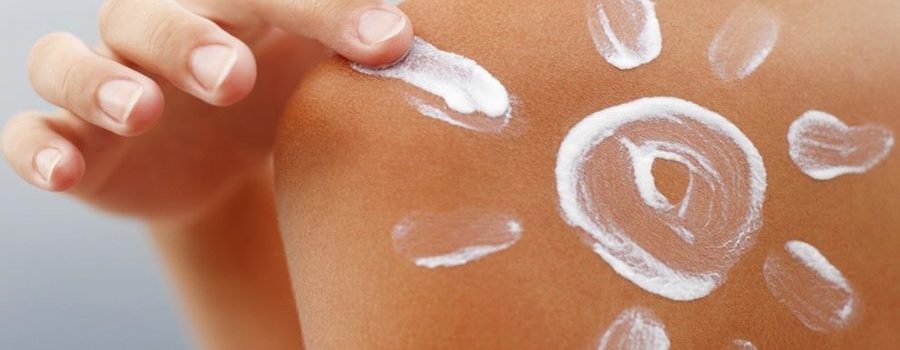Sunlight has many health benefits but sun safety is still important. Almost everyone enjoys being in the summer sun, and there are many reasons why we should all enjoy the great outdoors, especially in warm weather.
The sun’s rays help our bodies produce vitamin D, which helps develop and maintain bones and teeth. A number of studies have shown that many people have low vitamin D levels, which can lead to osteoporosis and other ailments.
While it’s fun to get out into the summer sun with family and friends, there are some precautions you should take to make sure you are thinking about sun safety while outdoors.
How Does the Sun Cause Damage to the Skin?
Ultraviolet (UV) radiation is a type of energy produced by the sun. UVA and UVB rays are the primary culprits responsible for skin damage:
- UVA radiation causes immediate tanning and premature skin ageing and plays a role in the development of certain skin illnesses.
- UVB radiation is responsible for delayed tanning, sunburns and some skin-related illnesses.
What Time of Day is Most Dangerous?
In Canada, UV radiation from the sun reaches its peak between 12 noon and 1 p.m, this is when sun safety is most important. During this time, the sun’s rays have the least distance to travel through the atmosphere.
The UV index, which was developed by Environment Canada, is a useful tool when it comes to sun safety and evaluating the danger of the sun’s rays. This index assigns a number that corresponds with the strength of the UV rays reaching the earth: the higher the number, the stronger the UV rays, and thus the greater the need to protect yourself during these key times.
A UV index between zero and five means that you should apply sunscreen and wear sunglasses if you’ll be outside for more than 30 minutes. A UV index of six to 10 means that additional sun safety is required: stay in the shade when possible, and wear both sunglasses and a hat. The UV index in Canada is generally three or higher between 11:00 a.m. and 3:00 p.m, this is when sun safety must be top of mind.
Sunscreen 101: What You Need to Know

Ideally, you should apply sunscreen whenever you’ll be outside to enhance sun safety. The sun emits harmful UV rays year-round, whether it’s sunny or not. In fact, even on cloudy days, up to 80 per cent of the sun’s harmful UV rays reach the earth and can penetrate your skin. Sunscreen protects people from the sun’s UV rays in two different ways: some work by scattering the light and reflecting it away from your body, while others absorb the UV rays before they reach your skin. Whichever choice you make, look for the phrases “broad spectrum” or “multi-spectrum” on the label. This means that the sunscreen wards off both UVA and UVB rays.
What About Sun Protection Factor (SPF)?
Sun protection factor (SPF) is also important when choosing a sunscreen. The SPF is a rating of how effective a sunscreen is in preventing sunburn caused by UVB rays. For example, if your skin would normally start to burn within 10 minutes of sun exposure, SPF 15 multiplies that by a factor of 15, meaning you could go 150 minutes before burning (10 minutes x SPF 15 = 150 minutes). The Canadian Dermatology Association recommends that people should use a sunscreen with an SPF of at least 30.
What Type of Sunscreen, How Much and How Often?
Sunscreens come in a wide variety of formats, including creams, ointments, lotions, sprays and gels. All of these provide protection against the sun’s rays.
Whichever format you choose, it is important to apply a liberal amount of the product and ensure that all of your exposed skin is covered – this includes your face, ears, arms, hands, legs and feet. A good rule of thumb is to apply about 30 mL (one ounce) or enough to fill a shot glass.
Apply sunscreen to dry skin 15 minutes before going outdoors; this will give your skin a chance to absorb the product fully. Sunscreen should be reapplied about every two hours, or after swimming or sweating heavily.
Sunscreen Ingredients
If you’re looking for sunscreens that contain natural ingredients, choose ones that contain titanium dioxide or zinc oxide. These sunscreens will also carry the eight-digit Natural Product Number, which tells you that they contain natural ingredients. These ingredients are effective in blocking both UVA and UVB rays.
Some sunscreens on the market contain ingredients that may irritate the sensitive skin of children and babies. Adults with sensitive skin, skin conditions or allergies should also be aware of common irritants found in some sunscreens. Testing a new sunscreen on a small patch of your skin to see how it reacts is one way of avoiding an unwanted reaction.
What About the Expiry Date?
Finally, pay attention to the expiration date on your sunscreen. Some of the ingredients will eventually break down, compromising the product’s effectiveness. As well, sunscreens are often kept in hot temperatures – for example, in your car or a beach bag – and these conditions can speed up its deterioration.
Sun Safety Tips
In addition to applying sunscreen, consider taking the following precautions:
- Stay in the shade when possible, particularly at midday, when the sun can cause the most damage.
- Wear sunglasses and a hat. A hat with a three-inch brim will help protect your scalp, nose, cheeks, ears and neck.
- Wear sun-protective clothing: look for clothing that has an ultraviolet protection factor (UPF) rating; the UPF represents the ratio of sunburn-causing UV rays without and with the protection of the fabric (similar to SPF ratings for sunscreen). A plain white T-shirt, for example, has a UPF of five, while a cotton or spandex sun shirt or rash guard made especially for outdoor wear has a UPF of about 50.
- While you’re in the sun and afterwards, drink a beverage that will help your body stay hydrated (such as water, lemon or coconut water, or herbal tea). Steer clear beverages that contain caffeine (e.g., coffee, tea and some sodas), as they have a diuretic effect.
- After exposure to the sun, apply a soothing, natural cream or lotion that contains aloe, chamomile or shea butter; these will give your skin some much-needed moisture.
Sun protection is important year-round, but especially in the summer, when we tend to spend more time outdoors. Taking the appropriate steps – including wearing natural sunscreen and protective clothing – can help ensure your skin is protected.
Visit Hooper’s Pharmacy to learn more about safe and effective sunscreen choices.
References:
Article used with permission from Healthier by Nature, from the experts at the Canadian Health Food Association.
Book, Michelle W. How to Stay Safe in the Sun This Summer. Healthier by Nature. Retrieved from: https://www.healthierbynature.ca/body-and-beauty/skincare/how-to-stay-safe-in-the-sun-this-summer/

